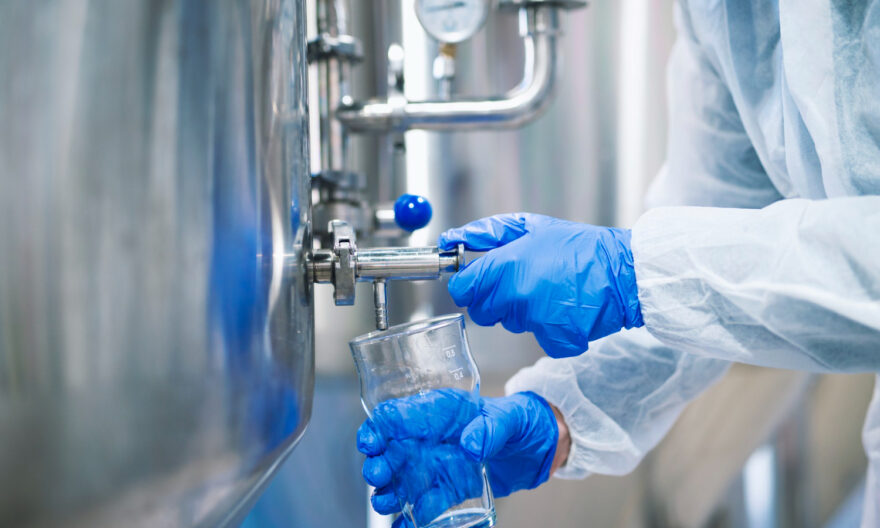
Access to clean water is vital for health and well-being. Moreover, as global populations grow, so does the demand for efficient industrial wastewater treatment technologies. Consequently, traditional methods often fall short of removing all contaminants, thus making advanced solutions necessary.
Furthermore, innovative water purification technologies not only enhance water quality but also ensure environmental sustainability. Therefore, understanding the latest advancements helps in choosing the right system for specific needs.
In light of this, this guide explores cutting-edge technologies in water purification, highlighting their benefits and applications. Ultimately, these innovations promise safer, cleaner water for households, industries, and communities worldwide.
Reverse Osmosis Systems
Reverse osmosis (RO) systems are arguably the most effective water purification technologies available. Specifically, they work by forcing water through a semipermeable membrane that filters out contaminants. Consequently, this process removes particles, ions, and molecules that are too large to pass through the membrane’s tiny pores.
Key Benefits
- High Efficiency: RO systems are highly efficient, removing up to 99% of contaminants. This includes harmful substances like lead, chlorine, and bacteria.
- Improved Taste: By eliminating impurities, these systems improve the taste and odour of water.
- Low Maintenance: Once installed, RO systems require minimal maintenance. Regular filter changes ensure optimal performance.
UV Purification Systems
Ultraviolet (UV) purification systems use UV light to disinfect water. Specifically, UV light penetrates harmful microorganisms and destroys their DNA. Consequently, this process renders them harmless.
How It Works
- Exposure to UV Light: Water passes through a chamber where it is exposed to UV light. The light effectively kills bacteria, viruses, and other pathogens.
- Continuous Flow: These systems allow for a continuous flow of purified water, making them suitable for both home and commercial use.
Benefits
- Chemical-Free: UV systems do not use chemicals, which means no change in the taste or smell of water.
- Effective: UV purification is highly effective against a broad spectrum of microorganisms.
- Environmentally Friendly: Without the need for chemicals, UV systems are an environmentally friendly option.
Ultrafiltration Systems
Ultrafiltration (UF) systems use a membrane similar to RO systems but with larger pores. These systems filter out bacteria, viruses, and suspended solids while allowing dissolved minerals to pass through.
Advantages of Ultrafiltration
- Retains Minerals: Unlike RO systems, UF systems retain essential minerals in the water. This makes the water healthier to drink.
- Energy Efficient: UF systems operate at lower pressures, making them more energy-efficient than RO systems.
- No Chemical Use: These systems do not use chemicals, ensuring that the water remains pure and natural.
Advanced Carbon Filters
Advanced carbon filters employ activated carbon to remove impurities from water. Indeed, the carbon’s large surface area enables it to absorb contaminants effectively.
How They Work
- Absorption: Activated carbon absorbs chlorine, volatile organic compounds (VOCs), and other contaminants. This process improves the taste and smell of water.
- Micropores: The carbon’s micropores trap particles, ensuring that they do not pass through with the purified water.
Benefits of Advanced Carbon Filters
- Improves Taste and Odor: These filters remove substances that affect water’s taste and smell, providing fresh and clean water.
- Easy to Install: Advanced carbon filters are easy to install and require minimal maintenance.
- Cost-Effective: They are a cost-effective solution for improving water quality.
Ozone Water Purification
Ozone wastewater treatment/purification is an advanced method that uses ozone gas to clean water. Specifically, ozone, a strong oxidant, effectively destroys bacteria, viruses, and other harmful microorganisms. Consequently, this process provides safe and clean drinking water without adding chemicals.
How Ozone Purifies Water
- Ozone Generation: Ozone generators produce ozone gas from oxygen. This gas is then injected into the water supply.
- Oxidation Process: Ozone reacts with contaminants in the water. This oxidation process breaks down harmful substances, making the water safe to drink.
- Residual Ozone: Any remaining ozone reverts to oxygen, leaving no harmful residues.
Pros and Cons of Ozone Purification
Pros:
- Effective Disinfection: Ozone is highly effective at killing bacteria, viruses, and other pathogens.
- Chemical-Free: Ozone purification does not use chemicals, which means no chemical residues in the water.
- Improves Taste and Odor: By removing contaminants, ozone improves the taste and smell of water.
Cons:
- Initial Cost: Ozone systems can be expensive to install.
- Energy Usage: These systems require electricity to generate ozone, leading to higher energy costs.
- Maintenance: Regular maintenance is necessary to ensure the system works properly.
Nanotechnology in Water Purification
Nanotechnology is revolutionizing water purification. Specifically, it involves using nanoparticles to remove contaminants at a molecular level. Consequently, this technology offers innovative solutions for clean water, thus making it an exciting area of development.
How Nanotechnology Improves Water Quality
- Nano-Filtration: Nanoparticles create a filtration barrier that traps contaminants. This includes bacteria, viruses, and chemical pollutants.
- Catalysis: Nanoparticles can act as catalysts, breaking down harmful substances into harmless ones.
- Adsorption: Nanoparticles have a high surface area, allowing them to adsorb and remove a wide range of contaminants.
Potential Applications and Benefits
- Household Use: Nanotechnology-based filters are increasingly available for home water purification systems. They provide an effective way to ensure clean drinking water.
- Industrial Use: Industries benefit from nanotechnology in wastewater treatment. This ensures that discharged water meets environmental standards.
- Developing Regions: Nanotechnology offers affordable and efficient water purification solutions for developing countries. This helps provide access to clean water in areas with limited resources.
Solar-Powered Purification Systems
Solar-powered purification systems utilize solar energy to clean water. Consequently, these sustainable and cost-effective systems are ideal for remote areas and, moreover, places with limited access to electricity.
Description of Solar-Powered Systems
- Solar Panels: Solar panels collect energy from the sun. This energy powers the purification process.
- Purification Methods: These systems can use various methods, such as UV purification or reverse osmosis, depending on the design.
- Storage Tanks: Purified water is stored in tanks for later use.
Environmental and Economic Benefits
- Sustainable Energy: Solar-powered systems use renewable energy. This reduces the reliance on fossil fuels and lowers carbon emissions.
- Cost Savings: After the initial investment, these systems have low operating costs. They are ideal for communities with limited financial resources.
- Accessibility: Solar-powered systems provide clean water in remote and off-grid areas. This improves the quality of life for people in these regions.
Smart Water Purification Systems
Smart water purification systems seamlessly integrate technology to enhance water quality monitoring and control. Consequently, these advanced systems effectively use sensors, data analytics, and automated controls to efficiently optimize the purification process.
Features of Smart Systems
- Real-Time Monitoring: Sensors continuously monitor water quality. They detect changes in parameters like pH, turbidity, and contaminant levels.
- Automated Controls: Based on sensor data, automated controls adjust the purification process. This ensures consistent water quality.
- Data Analytics: Data from the system is analyzed to identify trends and optimize performance. This helps improve efficiency and reduce costs.
Benefits and Potential Future Developments
- Enhanced Quality Control: Smart systems provide precise control over water quality. This ensures safe and clean drinking water at all times.
- Efficiency: Automated controls and data analytics improve the efficiency of the purification process. This reduces energy consumption and operational costs.
- Scalability: Smart systems are scalable, making them suitable for both small households and large industrial operations.
- Future Innovations: Ongoing advancements in technology will continue to enhance smart water purification systems. This includes the integration of artificial intelligence and machine learning for even better performance.
Conclusion
Selecting the right water purification technology is crucial for ensuring clean water. Indeed, innovative methods like ozone purification, nanotechnology, solar-powered systems, and smart purification provide effective solutions. Consequently, these advancements offer promising future developments, ultimately ensuring safer and cleaner water for all.



